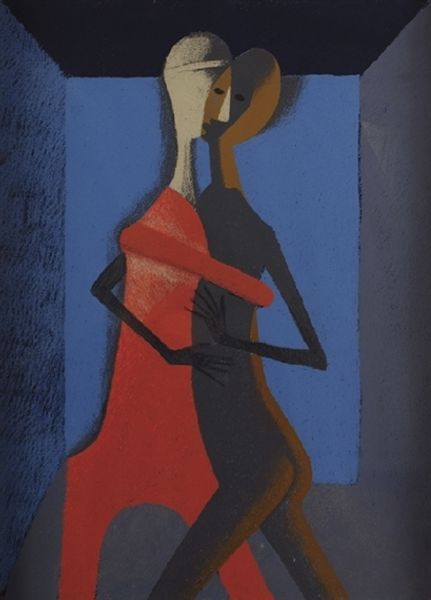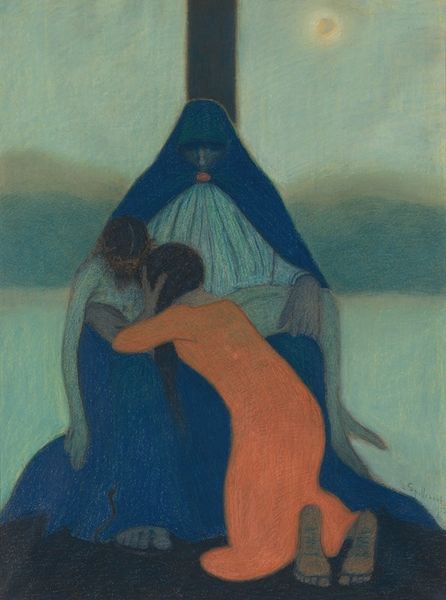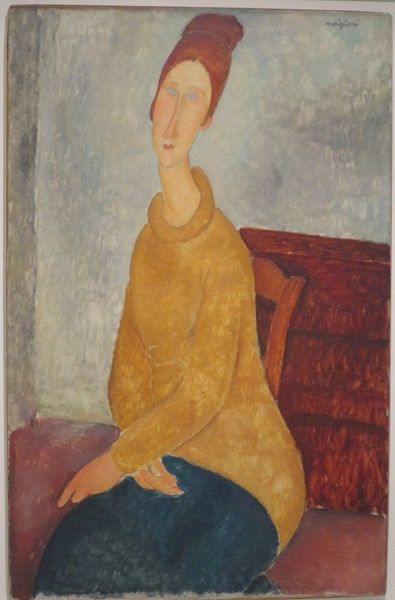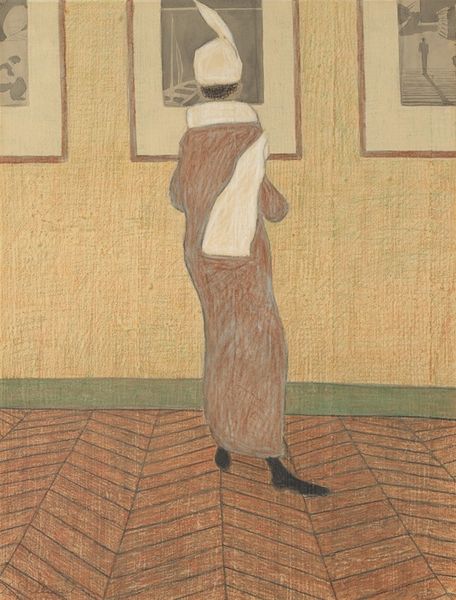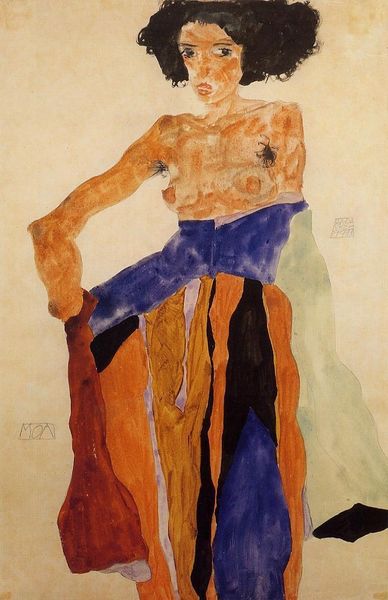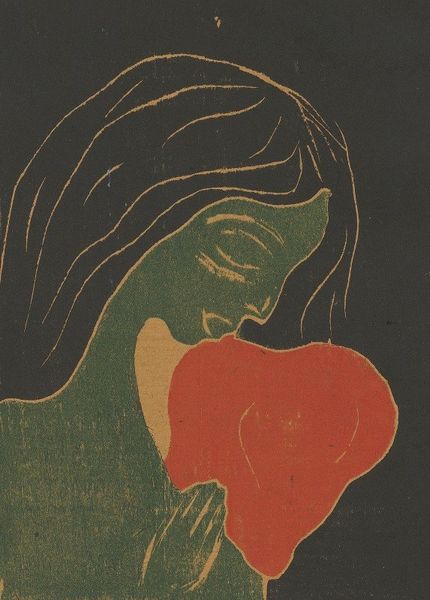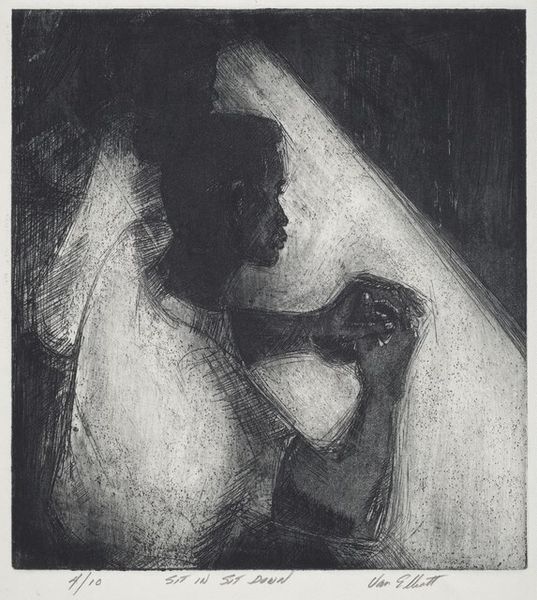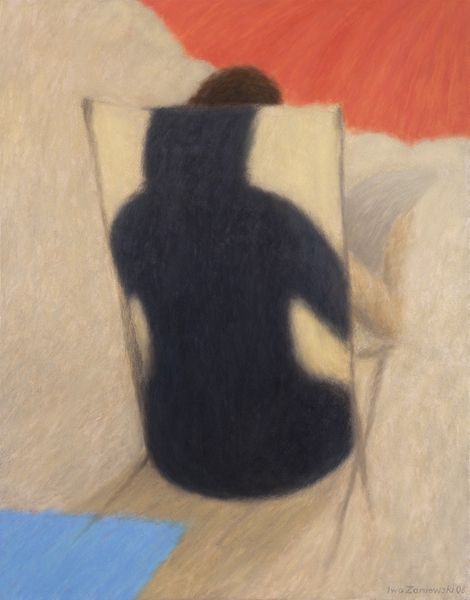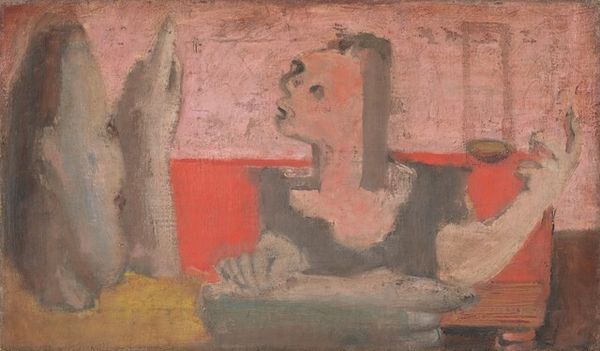
painting, oil-paint
#
portrait
#
painting
#
oil-paint
#
figuration
#
modernism
Copyright: Milton Avery,Fair Use
Curator: Standing before us, we have Milton Avery's "Woman with a Hat," rendered in oil paint, created in 1945. It's deceptively simple. Editor: My first impression is a kind of quiet unease. The facelessness is unsettling, but the palette is warm, almost inviting. What's she hiding, or rather, what's being hidden from us? Curator: That facelessness is key, isn't it? Avery often reduced forms to their essence. Consider the era: painted just after World War II, this portrait could be read as a comment on the depersonalization inherent in modern life, in societal expectations of women at the time. It certainly resists easy categorization. Editor: That makes sense. It is a reductive style and very spare. The flatness of the image, paired with that gesture of almost clutching the hat. The hat’s shape obscures identity and adds such drama. And I don’t know what kind of hat this could be. What kind of message does this "hat as shield" communicate? What are some things that may have occurred at that moment for a woman to hold a hat like this? Curator: We can analyze how Avery engaged with and pushed back against prevailing social mores in the New York art scene, against a certain kind of heroic figuration and find interesting contrasts between this quiet form of portraiture, the grand artistic narratives of the period. Avery strips everything away—the face, even—to arrive at some basic, unadorned truth, or an exploration of a person in conflict. Editor: Perhaps "basic" isn’t the right word. There is an undeniable, powerful message coming from a female artist regarding anonymity, the impact of society, and gender inequality. The woman herself may be hidden by a hat, but I, for one, am looking more closely. Curator: Right, and the "shielding" of identity that’s still relevant today. Maybe a way of protecting oneself. Editor: That quietness you mentioned isn’t necessarily weakness. Curator: Indeed, and it's a reminder to resist assumptions based on prevailing historical art narratives and what’s deemed most valuable at any one time. What an invitation, even now.
Comments
No comments
Be the first to comment and join the conversation on the ultimate creative platform.

